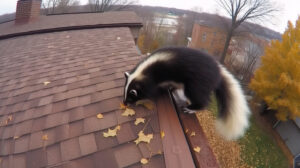If you are out in nature or your garden, you may find tracks from critters who have passed through. It’s important to your safety in the wilderness that you know what animals are in the area. In the garden or on a farm it’s helpful to know who is eating your crops, as well. Animal track identification is a valuable skill in both situations and more, such as hunting. This article will investigate a common animal you may want to know is in the area before you run into it. Read on for the complete guide to skunk track identification – what they look like, where you can find them, and why they are helpful.
| Characteristic | Description |
|---|---|
| Size | 1.5 to 2 inches |
| Shape | Oval |
| Features | Front Pawprints: 1 palm pad and 5 long finger marks Back Pawprints: 2 palm pads and 5 long finger marks |
| Claws | Present Note: Claw marks on the front paw tracks are further away from their corresponding toepads than claw marks on the rear pawprints |
Animal Background
Description
There are 10 species of skunks alive today and they all can spray perceived threats with a pungent liquid. They have special anal scent glands that allow for this smelly defense mechanism. The closely related stink badgers also share this ability. Skunk spray has high accuracy and can be projected as far as 10 feet. This is an example of chemical antipredator behavior.

This is a striped skunk sporting its telltale black and white coat.
©Geoffrey Kuchera/Shutterstock.com
Different skunk species are most often black and white. Their fur may also be light brown or cream in color. Many species, like hog-nosed skunks, have stripey patterns, and others, like the appropriately named spotted skunks, have spots. These species weigh between 13 ounces and 19 pounds with the smallest being the pygmy spotted skunk and the largest being the American hog-nosed skunk.
As Pets
Skunks can be kept as pets in many countries. In the United States, it is legal in 17 states to own a skunk as a pet and you can have their anal scent glands surgically removed. In the UK, skunks are legal pets but it is illegal to remove their glands. Other countries where it is possible to keep a pet skunk are Canada, Germany, the Netherlands, Poland, and Italy. All of these places have rules in place regulating the legal ownership of skunks and they often require permits. In addition to removing a skunk’s anal glands, pet owners also can declaw their animal. Skunks have long claws on their front paws adapted for digging. They are helpful in the wild, but not indoors.
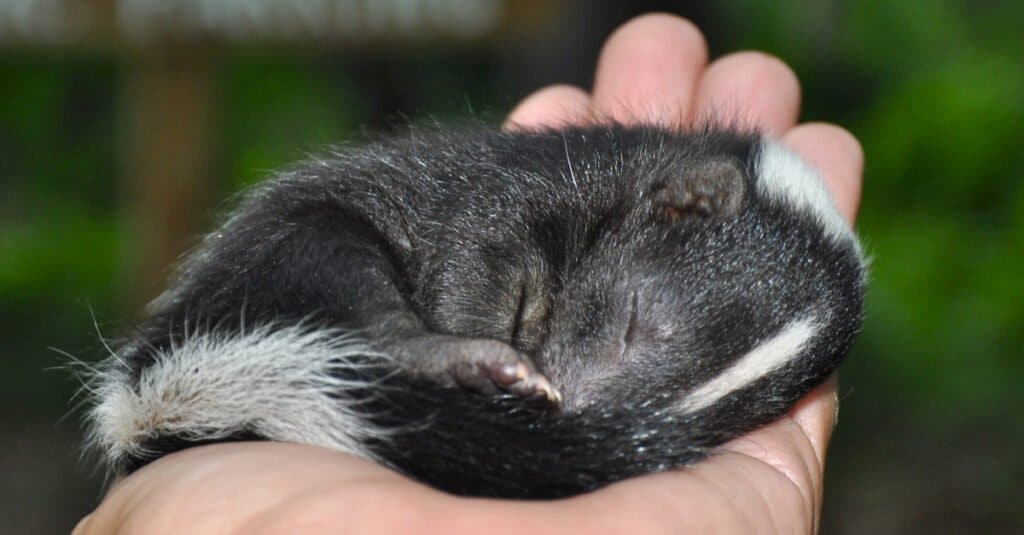
Skunks can be kept as pets in many countries.
©Becky Sheridan/Shutterstock.com
Skunks have a calm temperament and are very intelligent. They are therefore very curious, as well. They have individual personalities like dogs and can be very playful. As wild animals, however, they are prone to erratic behavior and when kept as pets, they don’t receive the stimulation they require and have evolved for.
Distribution
Skunks are isolated to the Americas in nature. In North America, they have a wide distribution across the entire United States and in Canada, not including the Arctic. The most prolific species in North America is the striped skunk. There are also populations of skunk species in Central America and South America. Two species of stink badger live in southeast Asia, but otherwise, there are no natural skunk populations in Europe, Africa, Australia, or Asia.
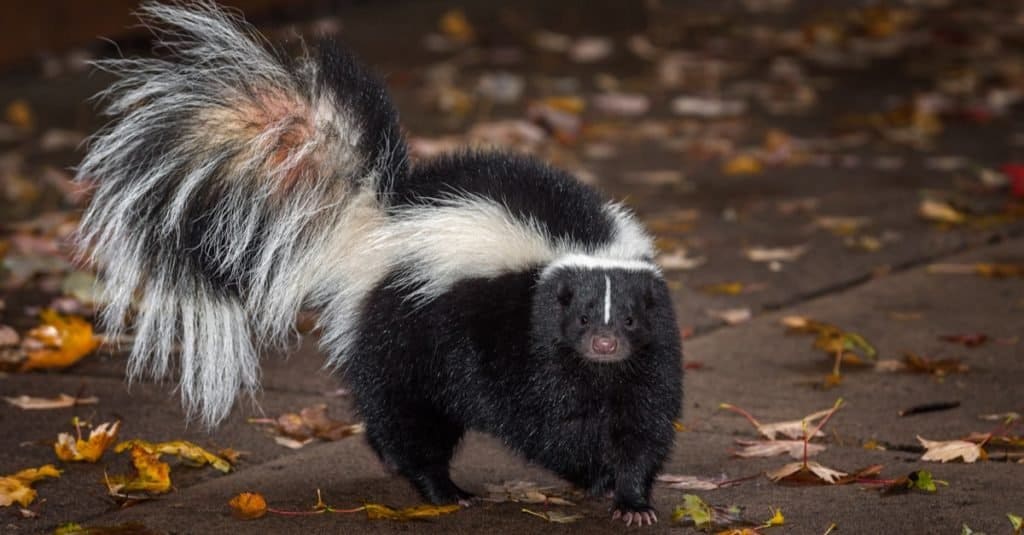
Although you won’t find any on concrete, you may find skunk tracks in human-populated areas.
©Geoffrey Kuchera/Shutterstock.com
Skunks are extremely versatile and can survive in many different habitat types. They primarily prefer open areas and are frequent visitors to farms. In nature, they live in fields and forests. They can also be found in rural or suburban areas, but not as often in cities. A human can smell the spray of a skunk up to 1.5 miles away. Here’s how you can identify skunk tracks if you find some in your neighborhood!
Skunk Tracks
Paw Morphology
Striped skunks have four forward-facing paws, each with five toes. They have long claws on their forepaws and shorter claws on their hind paws. In their front tracks, visible features are one large palm pad, 5 adjacent toepads, and five claw marks, all on the front side of the track. Their hind track includes 2 palm pads, 5 toe pads, and 5 claw marks. The skunk’s back feet’s palm pads are one behind the other, not side-by-side. Their tracks are approximately 2 inches long and are oval. Skunks have long digits that are clearly visible in their tracks.
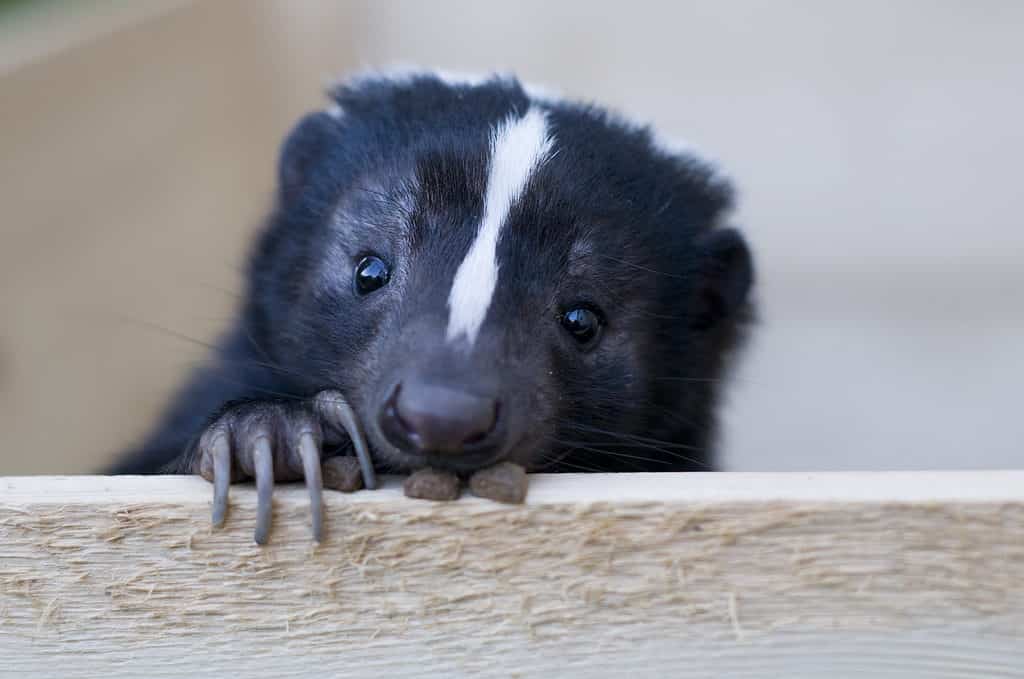
Skunks have long claws for digging that appear in their tracks.
©Yasmins world/Shutterstock.com
Many animals produce tracks easily mistakable for skunk prints. One way to differentiate them from domestic cat prints is by their long digits. Skunks leave a longer mark from their fingers whereas cats leave dots from their toepads. Also, cats have retractable claws that do not appear in their tracks. Squirrel tracks are slightly smaller than skunk tracks and do not include long digits. Rabbit pawprints are distinctly smaller than squirrel pawprints.
Snow
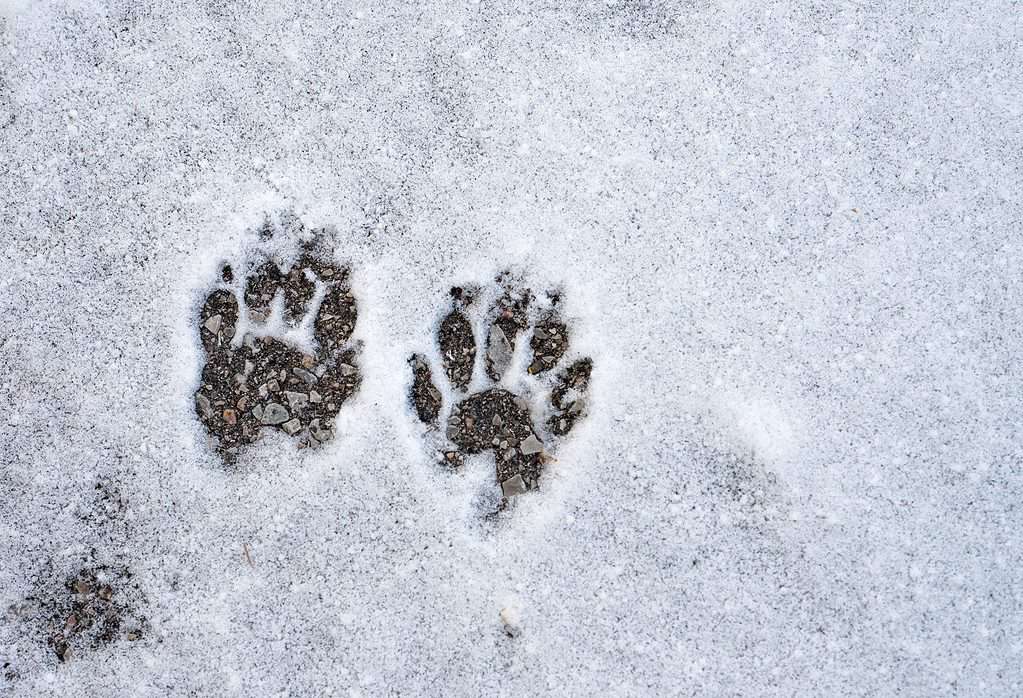
A skunk’s tracks in the snow reveal one palm pad. Therefore, these are front pawprints.
©LesPalenik/Shutterstock.com
Skunks inhabit areas that receive significant snowfall including the northern United States and parts of Canada. Although skunks typically avoid deep snow, shallow and compact snow can produce detailed prints. In very bright areas reflecting light may make snow tracks harder to see. In good conditions, however, skunk tracks in the snow will include palm prints and toe impressions. Claw marks may be indiscernible in the snow, but if they do appear, they will likely look smaller than marks in the mud.
Mud

Dirt, snow, and other soft ground will allow for clear skunk tracks more so than hard surfaces.
©Christine Key/Shutterstock.com
Mud is the best ground matter for capturing skunk tracks. All palm pads, toepads, and claw impressions will be visible if the mud is neither too wet nor too dry. Claw marks in muddy conditions will appear distinctly further away from the corresponding toepads of the front paws than those in the rear. You will likely find skunk tracks in the mud because much of their range experiences seasonal precipitation. They will also be common in the soft ground surrounding bodies of water.
Other
Other surfaces like hard ground or loose sand may not help track skunks. On hard ground, skunks do not weigh enough to make clear impressions. In sand, the volatile and environment-prone grains likely won’t maintain a pawprint shape in dry conditions. When the ground is not suitable for tracking animals, local knowledge of existing species and seasonal behaviors, like migration, can help with identification.
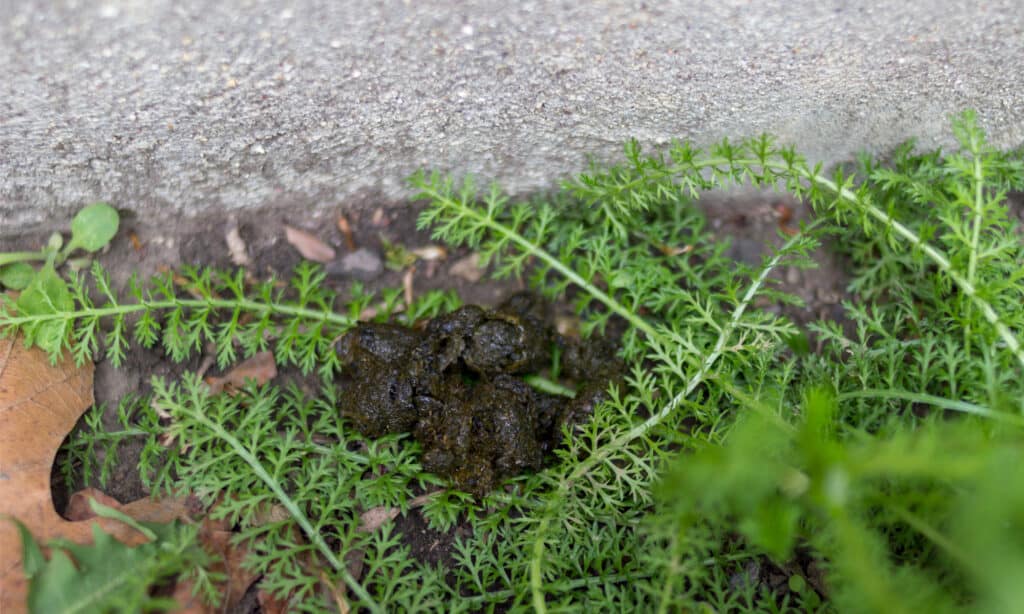
Skunk feces can be a helpful tool when tracking skunks.
©iStock.com/KathrynSK
For situations where it is difficult to identify tracks, either due to lack of detail or the presence of coexisting species’ tracks, another useful tool is animal scat. Droppings can allow you to identify what animals have been in the area and relatively how long ago they were there. Skunk feces usually contain many undigested insect parts, are dark brown or black, and are 1 ½ to 2 inches long. They look somewhat like cat poop.
The photo featured at the top of this post is © Agnieszka Bacal/Shutterstock.com
Thank you for reading! Have some feedback for us? Contact the AZ Animals editorial team.




